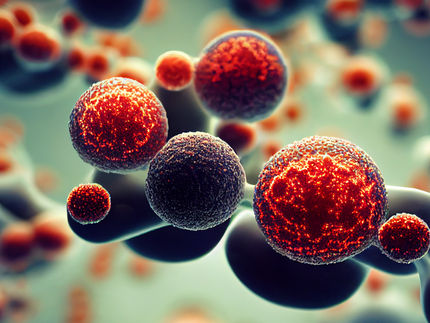Johns Hopkins biologist leads research shedding light on stem cells
A Johns Hopkins University biologist has led a research team reporting progress in understanding the mysterious shape-shifting ways of stem cells, which have vast potential for medical research and disease treatment.
In a research paper to be published in the journal Cell Reports, Xin Chen, an associate professor of biology in the university's Krieger School of Arts and Sciences, and six co-authors report on how stem cells are affected by their immediate surroundings. The scientists found that an enzyme in the spot where stem cells are found can help nurture a greater abundance of these cells by sustaining them in their original state, and by promoting other cells to lose their specialized traits and transform into stem cells.
The results show that the enzyme aminopeptidase in the stem cell niche - in this case, the area where stem cells are found in the testicular tissue in fruit flies - plays a role in both of these functions. How the niche itself plays this role, however, remains unclear.
That the enzyme in that spot promotes more specialized cells to become like stem cells "suggests that this change of cell fate needs cues from where stem cell normally reside, but not randomly," said Chen, the principal investigator. "These results have medical implications because if this cell fate change could happen randomly, it may lead to diseases such as cancers."
That's because there's a delicate balance to be struck in managing the proliferation of undifferentiated stem cells in tissue, Chen said. Too few can cause tissue deterioration, but too many can promote tumors.
The study focused on fruit flies in part because they share with humans about three-quarters of the genes that cause disease, making them a fine research model. The work on this paper focused on the testis because stem cells are found there in both fruit flies and humans.
Stem cells are found in humans in an array of tissues, including skin, blood vessels, teeth, heart, brain and liver.
Because they can develop from their original state into specialized or differentiated cells, stem cells have long held out the promise of being used to replace damaged organs and muscle. Stem cells have been used to treat illness in limited ways for decades, including transplantation from bone marrow.
Their application could be much wider, however, if there were reliable techniques to control how they take on specialized functions, how they can revert to their stem state and, in some instances, how they proliferate in their original state to form potentially dangerous tumors.
One question now is whether the activity of the niche and of the enzyme reported in this research can be harnessed to manipulate stem cells to differentiate in useful ways. There's a lot of work yet to be done, Chen said.
"How cells become different, it's very important to understand that," Chen said.
Most read news
Other news from the department science

Get the life science industry in your inbox
By submitting this form you agree that LUMITOS AG will send you the newsletter(s) selected above by email. Your data will not be passed on to third parties. Your data will be stored and processed in accordance with our data protection regulations. LUMITOS may contact you by email for the purpose of advertising or market and opinion surveys. You can revoke your consent at any time without giving reasons to LUMITOS AG, Ernst-Augustin-Str. 2, 12489 Berlin, Germany or by e-mail at revoke@lumitos.com with effect for the future. In addition, each email contains a link to unsubscribe from the corresponding newsletter.























































